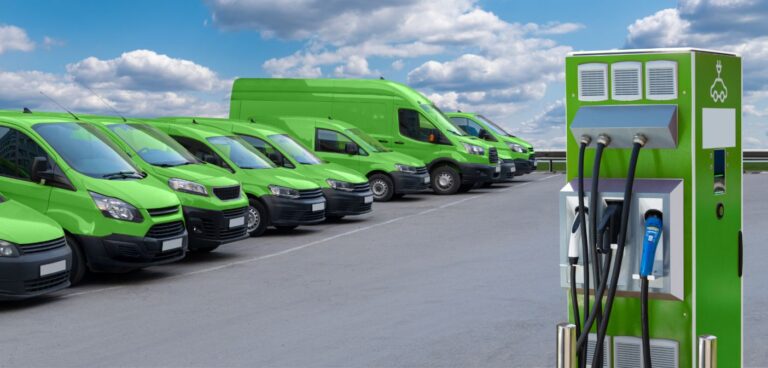Whether a robot or a person delivers your package the carbon footprint would essentially be the same, according to a University of Michigan study that could help inform the future of automated delivery.
Following a rise in online shopping, researchers looked to discover the environmental impacts of advanced residential package delivery scenarios that use electric and gas-powered autonomous vehicles and two-legged robots to ferry goods from delivery hubs to neighbourhoods, and then to front doors.
The study compared those environmental impacts with the traditional approach of a human driver who hand-delivers parcels. Its findings showcase that while robots and automation contribute less than 20% of a package’s footprint, most of the greenhouse gas emissions come from the vehicle.
Therefore, vehicle powertrain and fuel economy are the key factors determining the package’s footprint. Switching to EVs and reducing the carbon intensity of the electricity they run on could have the biggest impacts in sustainable parcel delivery, according to the researchers.
The team analysed the life cycle of 12 suburban delivery scenarios, not just tallying emissions from the delivery process but also counting greenhouse gases from manufacturing the vehicles and robots. It also looked at the emissions produced when disposing or recycling the robots and vehicles.
Researchers evaluated ‘conventional’ services, in which a human drives the vehicle the last-mile and delivers each package to the doorstep; ‘partially automated’, in which a human drives the last-mile and a robot completes the final 50 feet; and ‘fully automated’, in which a connected and automated vehicle drives the last-mile and a robot takes parcels to doorsteps.
“We found that the energy and carbon footprints of this automated parcel delivery in suburban areas was similar to that of conventional human driven vehicles. The advantages of better fuel economy through vehicle automation were offset by greater electricity loads from automated vehicle power requirements,” said Gregory Keoleian, professor of sustainable systems at the U-M School for Environment and Sustainability.
“For all delivery systems studied, the vehicle-use phase is the single largest contributor to greenhouse gas emissions, highlighting the need for low-carbon fuels for sustainable parcel delivery. It is critically important to decarbonise grids while deploying electrified vehicles.”
Keoleian added that no single automated delivery system will suit all situations, and in addition to environmental performance, other factors will need to be considered, such as life cycle costs, safety, visual impact and social sustainability factors including employment.
The paper, titled Life Cycle Greenhouse Gas Emissions for Last-Mile Parcel Delivery by Automated Vehicles and Robots is published in ACS’ Environmental Science & Technology.
The research was supported by the Ford University of Michigan Alliance Program and the Ford University Research Program.





